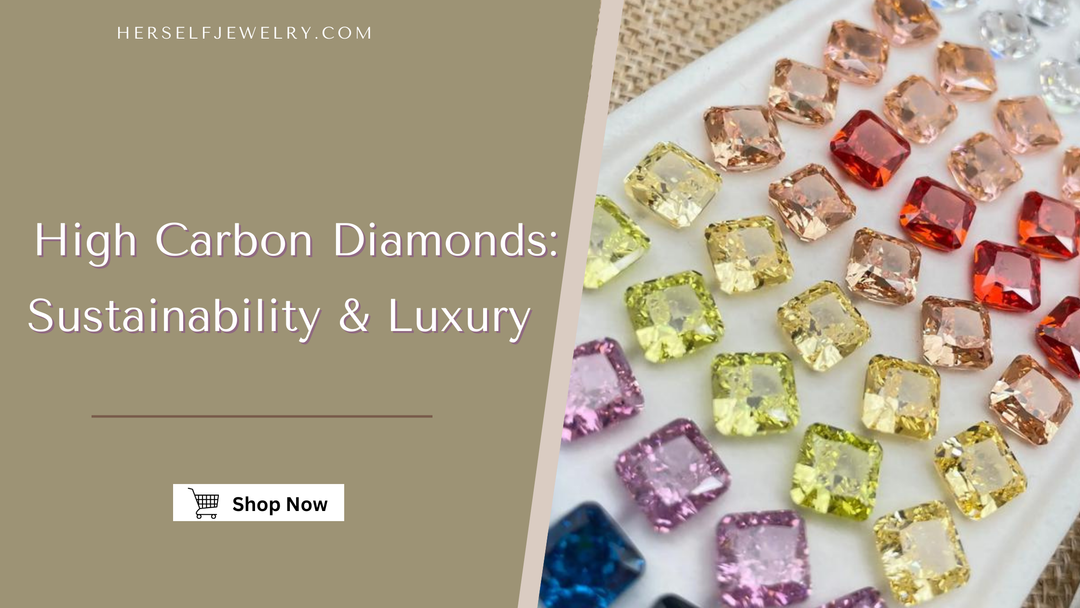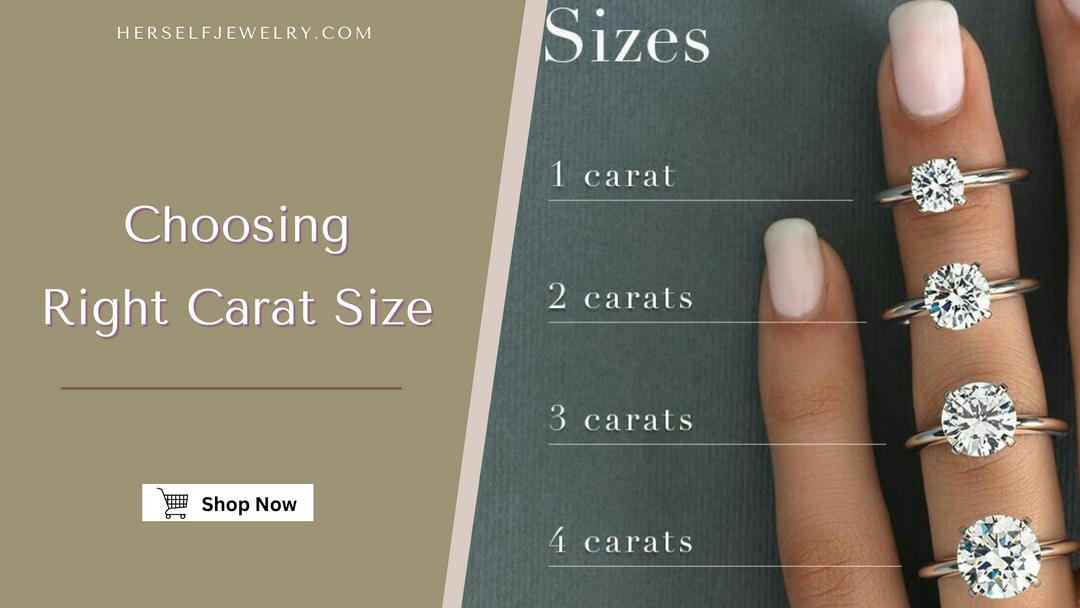Lab-Grown Diamonds: Origins, Creation Process, Popular Cuts, and Longevity
Lab-grown diamonds are quickly gaining popularity as an ethical and sustainable alternative to mined diamonds. In this blog, we’ll explore the history of lab-grown diamonds, the creation process, popular diamond cuts, how LGD (Lab-Grown Diamonds) maintain their brilliance over time and whether their evaluation criteria align with those of natural diamonds.
1. The Origins of LGD
The concept of lab-grown diamonds dates back to the 1950s, when scientists first succeeded in creating diamonds in a lab setting. General Electric pioneered this breakthrough in 1954, mainly for industrial purposes. As technology advanced, lab-grown diamonds reached the jewelry world, now meeting the same quality and aesthetic standards as mined diamonds. Today, Herself Jewelry uses lab-grown diamonds to align with our commitment to ethical and sustainable luxury, appealing to those who value beauty with a purpose.
2. Overview of the LGD Creation Process
Lab-grown diamonds are created using two main methods: High-Pressure High Temperature (HPHT) and Chemical Vapor Deposition (CVD).
- HPHT (High-Pressure High Temperature): This method places carbon under extreme pressure and heat, mirroring the natural conditions in the Earth's mantle where diamonds form.
- CVD (Chemical Vapor Deposition): Here, a diamond "seed" is placed in a chamber with carbon-rich gas, which is heated until carbon atoms bond and grow on the seed. This method provides exceptional control, ensuring consistent quality in gem-grade diamonds.
Both methods produce diamonds with the same physical, chemical, and optical properties as mined diamonds. At Herself Jewelry, we prioritize these more sustainable practices, ensuring every diamond reflects our “True Bespoke Modern Energy” philosophy.

3. Popular Diamond Cuts:
The cut of a diamond plays a vital role in its brilliance. Here are the most popular diamond shapes, which Herself Jewelry offers in both lab-grown and natural stones:
-
Round Cut: Known for its maximum sparkle, this classic cut is perfect for timeless elegance.

-
Princess Cut: A bold, modern square or rectangular cut, ideal for engagement rings with a sophisticated edge.

-
Oval Cut: This elongated shape is unique and can give a slimming effect on fingers.

-
Emerald Cut: A rectangular cut with step facets, perfect for a vintage and sophisticated look.

-
Pear Cut: Resembling a teardrop, it adds graceful elegance to rings and pendants.

Each cut brings out a unique aspect of the diamond, allowing Herself Jewelry to craft pieces that capture individuality and modern elegance.
- How Well LGD Retain Their Sparkle?
A key trait of diamonds is their enduring brilliance. Lab-grown diamonds, identical to natural diamonds in hardness (10 on the Mohs scale), are exceptionally resistant to scratching and retain their sparkle when properly maintained. Regular cleaning and occasional polishing keep a diamond's surface free from oils and dust, allowing it to maintain that perfect shine, matching the enduring energy Herself Jewelry imbues in every piece.
- Evaluation Criteria for Lab-Grown Diamonds
The evaluation criteria for lab-grown diamonds are largely consistent with those for natural diamonds, including the four main aspects of color, clarity, cut, and carat weight. This means that consumers can assess the quality and value of lab-grown diamonds using the same standards as those for natural diamonds. Herself Jewelry ensures that each diamond undergoes rigorous assessment, providing you with a transparent and trustworthy shopping experience.

At Herself Jewelry, we’re proud to offer you diamonds that reflect both beauty and purpose, embodying Your True Bespoke Modern Energy.











Leave a comment